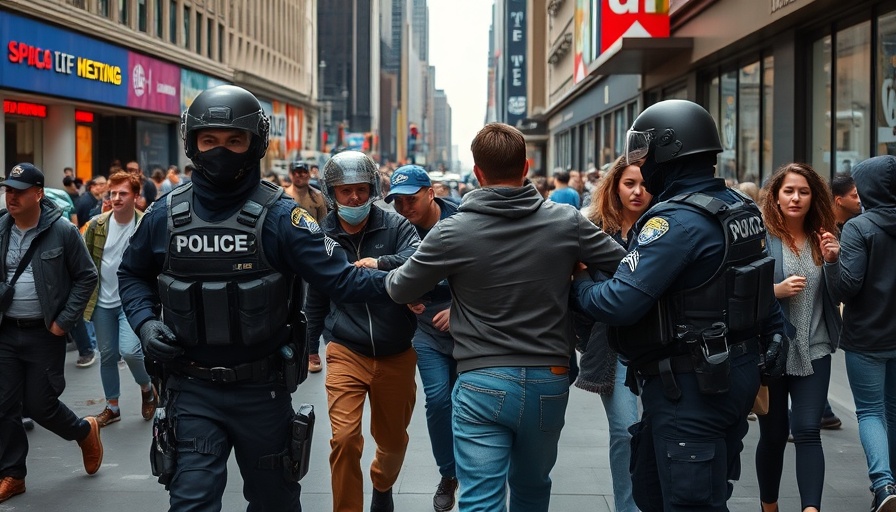
Understanding the Tensions: ICE Actions in San Francisco
The recent confrontation outside the ICE office in San Francisco highlights the ongoing tensions between law enforcement and social justice activists. As two protesters were tackled and detained by Immigration and Customs Enforcement (ICE) officers, this incident reflects not only the community's response to federal enforcement practices but also the urgent conversation around immigration policies in the United States.
Historical Context: The Legacy of ICE in San Francisco
San Francisco has long prided itself on being a sanctuary city, welcoming immigrants from diverse backgrounds. However, incidents like the August 8 altercation reinforce a backdrop of fear among communities who feel targeted by federal policies. Historically, the relationship between local authorities and federal agents has been fraught, as many residents express trepidation and mistrust towards ICE.
The Role of Activism in Local Politics
This event saw participation from local activists who are increasingly vocal about their opposition to ICE's tactics. The loss of trust in federal agencies makes community organizing more critical. Activists like Lea, a dedicated community organizer for homelessness support networks, embody the spirit of resilience against a system perceived as oppressive. These grassroots movements seek to advocate for enhanced rights and protective measures for local residents amid unpredictable federal actions.
Future Predictions: Will Resistance Influence Policy Changes?
As the backlash against ICE's enforcement grows, many are speculating about potential shifts in local and national immigration policies. The public’s response to such confrontations could spur city leaders to reconsider cooperative agreements with federal agencies. There is speculation that as public sentiments evolve, municipal governments might take a harder stance against ICE’s operations within their jurisdictions.
Community Reaction: Voices from the Streets
The reactions from those present at the protest encapsulated a wide array of emotions ranging from anger to fear. Cebo, another protester, voiced concerns over the detention of individuals without knowledge of their destination or treatment. “It’s alarming,” he remarked, identifying a gap in oversight that leaves families in limbo and highlights an ongoing struggle over immigration enforcement.
Psychological Impact on the Community
Such violent encounters resonate deeply within the community, creating an environment laden with anxious uncertainty. Families often grapple with the implications of ICE's presence in their neighborhoods, fostering a sense of alienation and fear. These emotional tolls can lead to a broader societal divide, influencing how community members interact with state mechanisms and perceive their safety.
Looking Ahead: What Should the Community Do?
To strengthen community ties and address the systemic issues oppressive actions like those seen can cause, local residents are urged to remain engaged. Organizing information sessions, advocating for legislative changes, and building coalitions with supportive allies can amplify community voices. By fostering unity, citizens can create a more supportive environment for those impacted by immigration enforcement and push for humane treatment from authorities.
Conclusion: Step Forward for Awareness and Change
As we process the events of August 8, it’s essential to recognize the profound implications behind these protests. The resilience shown by the community can pave the way for meaningful dialogue around immigration reform. To ensure safety and respect for rights to all residents, it is pivotal that citizens engage in local politics and advocate for a just and compassionate approach.
 Add Row
Add Row  Add
Add 




Write A Comment